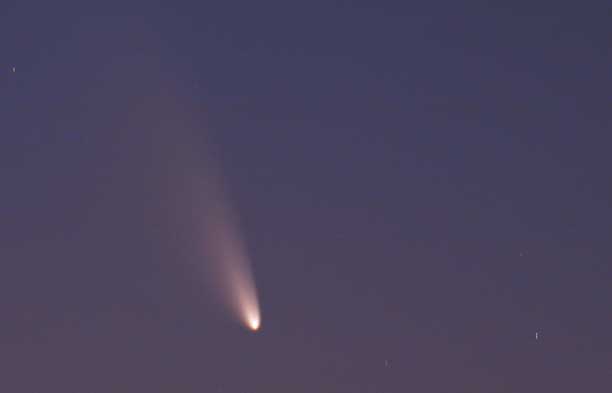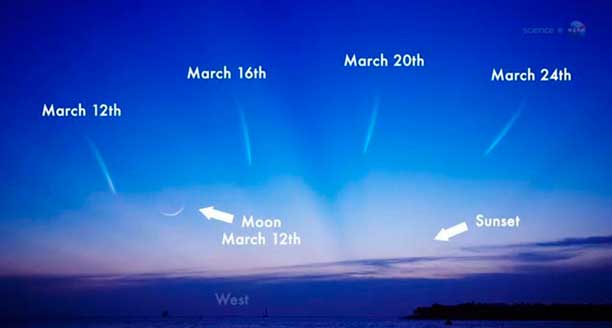
THUNDER BAY – Comet PANSTARRS is visible. Look to the sky and there is a rare opportunity. NASA states, “Comets visible to the naked eye are a rare delicacy in the celestial smorgasbord of objects in the nighttime sky. Scientists estimate that the opportunity to see one of these icy dirtballs advertising their cosmic presence so brilliantly they can be seen without the aid of a telescope or binoculars happens only once every five to 10 years”.
“That said, there may be two naked-eye comets available for your viewing pleasure this year”.
“You might have heard of a comet ISON, which may become a spectacular naked-eye comet later this fall,” said Amy Mainzer, the principal investigator of NASA’s NEOWISE mission at the Jet Propulsion Laboratory in Pasadena, Calif., and self-described cosmic icy dirtball fan. “But if you have the right conditions you don’t have to wait for ISON. Within a few days, comet PANSTARRS will be making its appearance in the skies of the Northern Hemisphere just after twilight.”

Comet PANSTARRS Tips
“There is a catch to viewing comet PANSTARRS,” said Mainzer. “This one is not that bright and is going to be low on the western horizon, so you’ll need a relatively unobstructed view to the southwest at twilight and, of course, some good comet-watching weather.”
Well, there is one more issue — the time of day, or night, to view it.
“Look too early and the sky will be too bright,” said Rachel Stevenson, a NASA Postdoctoral Fellow at JPL. “Look too late, the comet will be too low and obstructed by the horizon. This comet has a relatively small window.”
NASA states, “By March 8, comet PANSTARRS may be viewable for those with a totally unobstructed view of the western horizon for about 15 minutes after twilight. On March 10, it will make its closest approach to the sun about 28 million miles (45 million kilometers) away. As it continues its nightly trek across the sky, the comet may get lost in the sun’s glare but should return and be visible to the naked eye by March 12. As time marches on in the month of March, the comet will begin to fade away slowly, becoming difficult to view (even with binoculars or small telescopes) by month’s end. The comet will appear as a bright point of light with its diffuse tail pointing nearly straight up from the horizon like an exclamation point”.






